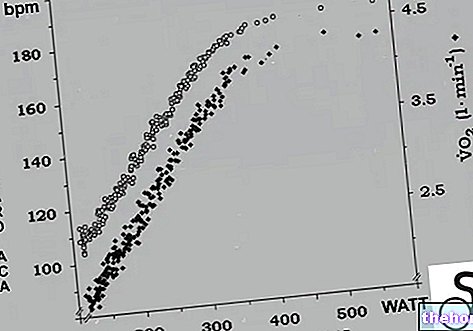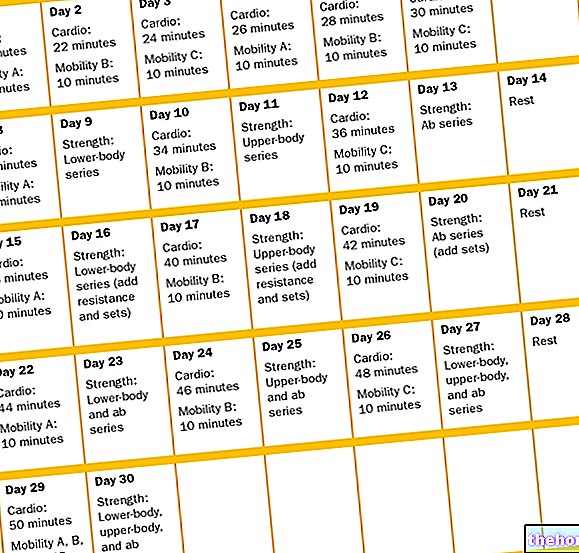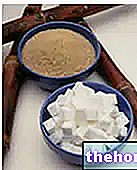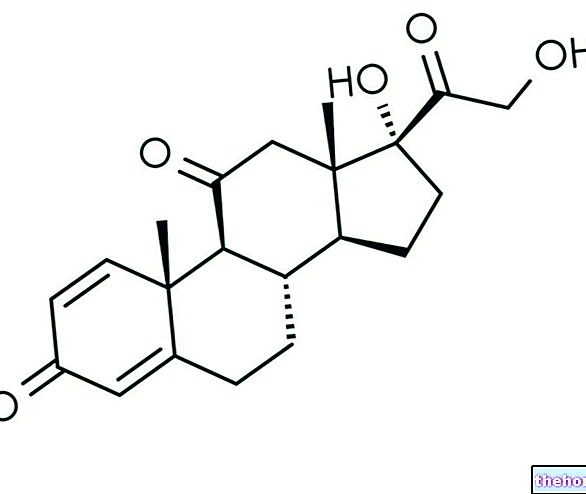First of all ... what is lean mass? It is important to explain this, since many people are confused about its meaning:
the lean mass or LBM (from the English Lean Body Mass) represents all that remains of the organism after having deprived it of the deposit fat (adipose tissue).
This figure, which has nothing to do with ideal weight, differs slightly from another anthropometric parameter, called fat-free lean mass:
the lean alipidic mass or FFM (from the English Fatty Free Mass) represents all that remains of the organism after having deprived it of all its lipid component, including the primary or essential fat (which protects the internal organs, constitutes the bone marrow, mammary glands and is present in various tissues).
Lean mass, therefore, is given by the contribution of bones, teeth, muscles, internal organs, connective tissue and essential fat. The distinction with alipidic lean mass is important, since primary fat is essential for the health of the individual and cannot be affected, if not minimally, by weight loss; it constitutes about 3% of male body mass and 12% of the female one.
The fat mass (FM, from the English Fat Mass) represents the total quantity of lipids extractable from the human body (primary fat + storage fat). As mentioned so far, a fat mass of less than 3% in man and 12% in women it is not compatible with good health and in the most drastic cases even with the life of the individual.
The determination of lean mass in vivo can take place according to different methodologies that differ in practicality, accuracy and costs (plicometry, bioimpedance analysis, body circumferences, Dexa, creatinine, magnetic resonance, CT, K40 and ultrasounds). A simple and immediate method is to calculate the lean mass starting from the individual height and weight:
James formulas:
Lean mass kg (man) = [1.10 x W (kg)] - 128 x {W2 / [100 x H (m)] 2}
Lean mass kg (woman) = [1.07 x W (kg)] - 148 x {W2 / [100 x H (m)] 2}
These are obviously approximate equations, useful for obtaining an estimate of the lean mass in sedentary individuals but completely unreliable in the evaluation of an athlete. Its value is in fact influenced by muscle mass (which normally represents about 50% of LBM) and by bone mass (approx. 20%). Consequently, a sportsman with strong bones and highly developed muscles will have a significantly higher lean mass than a sedentary person of the same weight.
The lean mass, if calculated in a precise and reliable way, provides excellent indications on the basal metabolism (clearly better than those obtained on the basis of the height of the individual). Among the many formulas, we remember that of Katch and McArdle, according to which the basal metabolic rate is equal to:
370 + (21.6 * LBM)
Observing the above formula, it is evident that the basal metabolism is directly proportional to the lean mass of a subject. Since its value is mainly influenced by muscle tissue, the more muscles we have and the more calories we consume throughout the day, regardless of age, thyroid function and level of physical activity. Muscle, in fact, is a living tissue. in continuous renewal and with metabolic demands much higher than the adipose tissue (almost ten times). To lose weight it is therefore advisable to go through the increase of lean mass, following an appropriate diet and a regular exercise program.



























-cos-cause-e-sintomi-e-cura.jpg)
